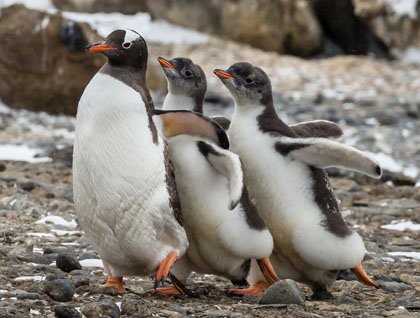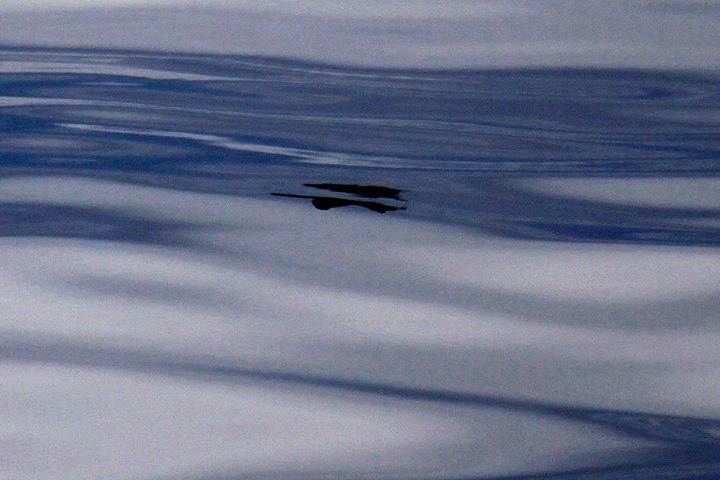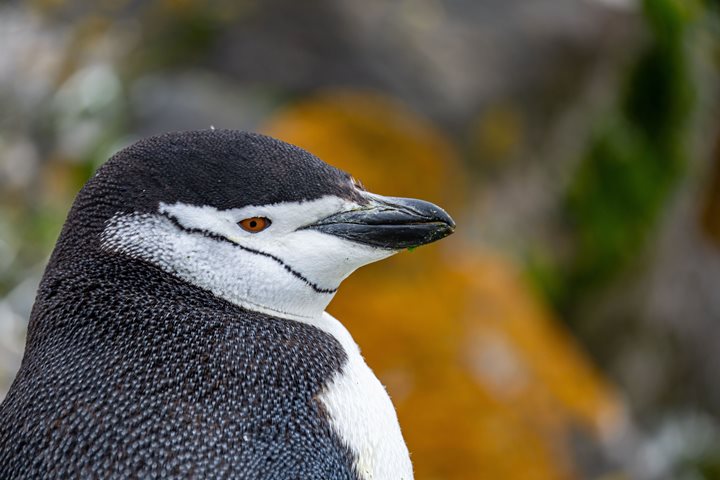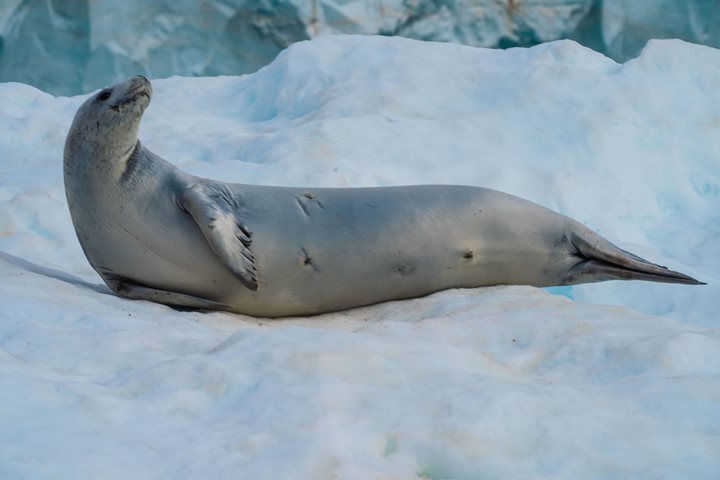Early morning light found National Geographic Explorer on approach to Brown Bluff, an Antarctic continental landing on the east side of the Tabarin Peninsula. While the red-brown tuff cliffs and wind-eroded ventifacts make for stunning geology to capture our attention, the real draw here are the nesting brush-tail penguins, both gentoo and Adélie.
Each species is at that time of their respective breeding cycle when the chicks are gaining their independence and starting to stray from parents. Both parents are leaving their chicks behind on the beach while going to sea to forage and return to feed their hungry offspring. Like teenage humans, the chicks seem to be simply insatiable and are constantly begging for more, more, more! Any parent that comes ashore from a feeding bout at sea is immediately accosted by hungry chicks, whether their own or not.
What is a parent to do? Imagine the dilemma; you return from sea looking and calling for your own chick to feed, but your little pride and joy has joined a group of other independent chicks who now roam freely without parental guidance all over the beach. In biological terms your offspring have begun to crèche, staying with other chicks for safety. Your calls bring several chicks running, but often not your own. How to make sure that the precious meal you worked so hard to obtain isn’t going to the wrong beak? You do what any good parent would do; you run! Run fast and run far, the chicks will follow and those that give up the chase are not your own, your own will stick to you, quite literally. Only when you are satisfied that the chicks trying to knock you over are yours do you stop and dole out a meal. A necessary strategy for penguin parents, but one of the most comical of penguin behaviors we humans are privileged to observe!
After leaving Brown Bluff we continued on south, into Fridtjof Sound. Magnificent tabular icebergs surrounded us as porpoising penguins accompanied our progress through the ice. The call came out from the bridge that killer whales had been sighted. Welcome news for our NMFS killer whale researchers Bob Pitman and John Durban, who were hoping for this exact opportunity. They quickly launched a Zodiac and were away with our own Stephanie Martin and Lisa Kelley to try and attach a satellite tag onto the dorsal fin of one of the killer whales. These killers had other ideas however, and kept just enough distance to make it impossible to tag any of them.
As the sun began to set there were still more adventures to be had aboard Explorer. We approached a huge iceberg literally covered in chinstrap penguins, making it a clean sweep of sightings for the day of all three brush-tail species. The waxing moon was rising as civil twilight arrived, and under moonlight two humpback whales began surface-lunging for krill right before the ship. As twilight slipped through aeronautical and into astronomical the whales continued feeding side-by-side, to the delight and cheers of excited whale watchers at all deck levels and on the bridge. The perfect ending to an absolute perfect Antarctic day!







